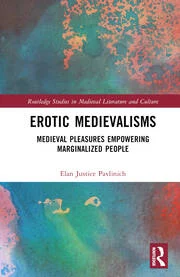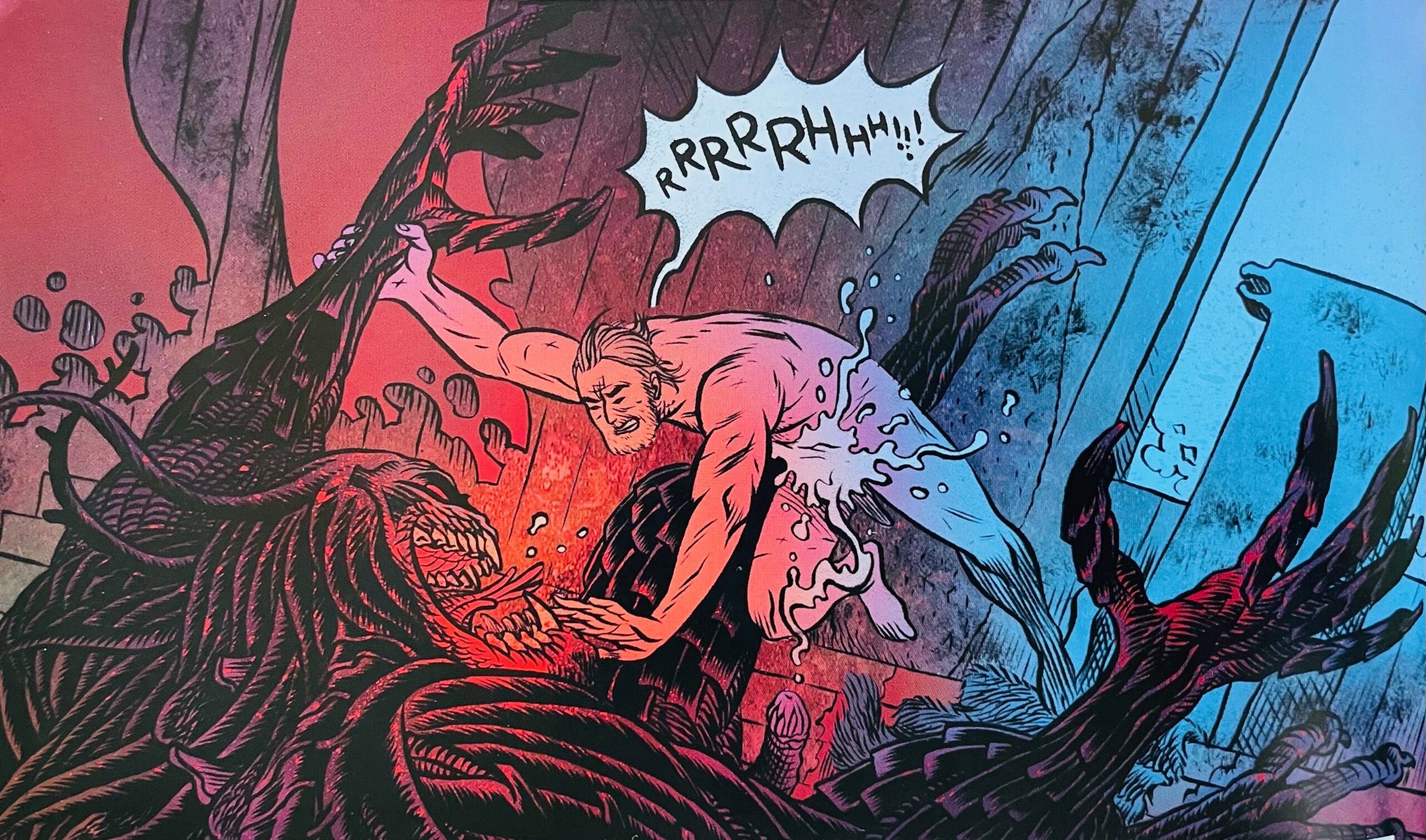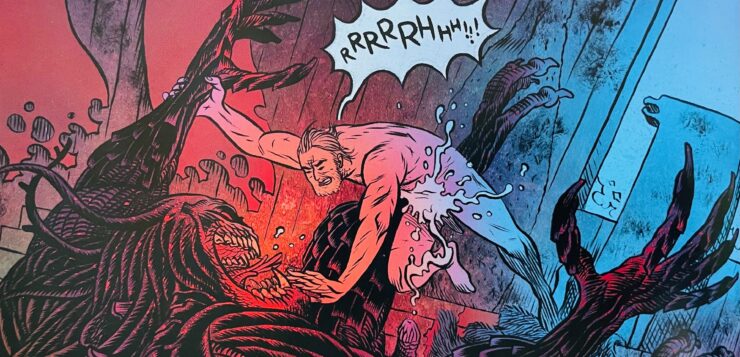 EROTIC MEDIEVALISMS
EROTIC MEDIEVALISMS
Medieval Pleasures Empowering Marginalized People
by Elan Justice Pavlinich
Routledge. 175 pages, $160.
NO ORAL SEX! No anal sex! No nude sex! No sex during daylight hours! No sex on Wednesday, Friday, Saturday, or Sunday! Sex during Lent, Advent, or Easter week is sinful! People in medieval Europe would have contended with countless restrictions on sexual activities to follow the teachings of the Catholic Church. A flowchart of unacceptable sex acts (summarizing medieval penitential manuals) is so complex that even the horniest of men would lose his erection if consulting it to avoid sin.
According to sex-averse Catholic doctrine, intercourse (in the missionary position) was permitted between a married man and woman only. Minimal enjoyment was allowed—many medical experts believed female infertility might be due to a lack of pleasure—but the goal was procreation. There were further taboos related to the Church calendar, female cycles, and bodily hygiene. Since the Church considered all sex outside these limits to be “lecherie,” or lust, I have to conclude that the vast majority of medieval adults were regularly engaging in sinful, perverse acts throughout their lives. (That would probably include many avowedly celibate clergy.)
Some of the most familiar examples of medieval eros are of the chivalrous type: Arthurian legends, Lancelot and Guinevere, courtly love, etc. These fin’amor (fine love) poems idealize longing, separation, and sex postponed. In psychoanalytic terms, these self-restraints of civility are an index of “secondary process,” as opposed to the bestial, immediate gratification of “primary process.” The literature representing that lusty, uncivil gratification is perhaps better known to scholars than to general readers: bawdy poems and farces. Elan Justice Pavlinich’s Erotic Medievalisms: Medieval Pleasures Empowering Marginalized People explores the range of medieval English literature as well as modern cultural phenomena finding inspiration in the Middle Ages. These “medievalisms”—from pop culture to poetry to BDSM sexual practices—draw upon a variety of fantasies, mythology, and even scholarship of the Middle Ages. Pavlinich’s monograph, a delightfully readable and theoretically savvy work of queer studies, presents Old English quotations followed by modern translations. He effortlessly slides back and forth between academic queer readings of medieval texts and a medievalist’s interpretations of contemporary ones.
“Medievalism” is a useful concept denoting the fancies of post-medieval people based on the culture of the Middle Ages. He points out how “Middle Ages” or “Dark Ages” or the “Enlightenment” are all labels created by later historians. All conceptions of past eras are the imagined recreations by historians inescapably influenced by contemporary cultural and political concerns. Scholarship of the past half-century has been enriched by historians “recovering” the history of women, non-elite, non-white, and queer people, whether through discovering neglected documents or simply reading canonical ones for topics that had been overlooked. Pavlinich’s thesis is as politically trenchant as it is precise: “erotic medievalisms employ sexualities to challenge traditional hierarchies and reclaim the medieval past for those who have been erased from historical narratives, excluded from popular representations, and marginalized by systemic oppression.” He is adept at highlighting the white, heteronormative bias of past and present literatures, cultures, and scholarship. (I would quibble with the last point. Feminist, queer, postcolonial medieval scholarship has burgeoned in the past decades, and colleagues in the field tell me that Medieval Studies conferences aren’t monopolized by straight white men discussing the canonical texts. Indeed, Pavlinich’s work is an example of what’s hot in the discipline.)
Pavlinich is a professor of English at Wabash College in Indiana. His 2019 doctoral dissertation was a queer reading of Old and Middle English literature. His publications range from the seriously philological to more approachable readings of Disney’s medievalisms; prin-cesses and castles are, after all, at the center of Disney’s empire. Erotic Medievalisms has three chapters examining specific artistic works: a graphic novel version of Beowulf, singer Lil Nas X’s music video Montero, and Patience Agbabi’s poem “The Kiss.” A fourth chapter deals with a cultural phenomenon: BDSM practices, imagery, and paraphernalia.
I haven’t struggled with Beowulf since AP English, yet its presence on the syllabus is an index of its canonical status. The epic poem was probably written around 1000 CE. It recounts the heroic deeds of its protagonist in 6th-century Scandinavia. There are bloody battles with the monster Grendel, his mother, and a dragon. J.R.R. Tolkien is just one of many translators of the sole surviving manuscript of Beowulf into modern English and scores of other languages. It has been adapted into movies and multiple graphic novels; as such, it is a logical place for Pavlinich to begin his analysis of medievalisms. He relies on a 2017 graphic novel

version by Spanish authors Santiago García and David Rubín. Their work is gorgeous and gory, cleverly using multiple insert panels to convey differing perspectives and time sequences. Pavlinich especially relies on two pages in which Grendel sneaks into the great hall where Beowulf and his men are asleep, intent on killing them. Instead, Beowulf battles the impenetrable, scaly-skinned monster and tears off his arm: “Licsar gebad atol æglæca; him on eaxle wearð syndolh sweotol, seonowe onsprungon, burston banlocan. Beowulfe wearð guðhreð gyfeþe.” (“The monster’s whole body was in pain, a tremendous wound appeared on his shoulder. Sinews split and the bone-lapping burst. Beowulf was granted the glory of winning.”) The original text is orgasmic in a grisly way, and García and Rubín illustrate the climactic scene in a totally original fashion: Grendel has an erection upon touching Beowulf’s penis and ejaculates copiously on the hero’s genitals as he bellows “rrrrrhhhh!!!”
While The Comics Journal critic Jake Murel is perplexed and scandalized by the extra-textual image, Pavlinich interprets it as a rendering of the homoeroticism of medieval homosocial warrior culture. The same ethos is commonly invoked in nationalistic propaganda, particularly of the fascist type. In the past (or in American football), manliness, toughness, and camaraderie are at once bound by, yet threatened by, homosexuality. Deftly relying on Lacanian analytic interpretation (via queer theorist Judith Butler), Pavlinich explains how Grendel’s desire literally embodies homoeroticism as monstrous and Other. His ejaculation on Beowulf is a degradation (like bukkake facial cum shots) as well as evidence of Grendel’s lack of civility and self-control. Yet both monster and hero belong to a fundamentally phallocentric culture. Pavlinich draws on the current notion of toxic masculinity to reflect on the interconnected sexism and homophobia that underlie ideals of violent virility in the Middle Ages and today.
Readers of this magazine were introduced to the gender-bending singer Lil Nas X, first in a review of his album Montero by Colin Carman (July-Aug. 2021) and later in a review of the video for the title song by Elan Justice Pavlinich himself (Nov.-Dec. 2021). The title refers to his given name, Montero Lamar Hill. The elaborate video for “Montero” is the focus of Pavlinich’s second chapter. Although he interprets it as a medievalism, the music video is narratively more akin to Handel’s Messiah—covering the entirety of biblical history from the Garden of Eden to the End Times. I’ve watched it countless times, trying to appreciate the complex sequence of images and allusions crammed into three minutes. Lil Nas X’s face is on all the characters in the eye-popping digital extravaganza. His Orpheus-like character in Eden ends up being seduced by a Satanic serpent. Enslaved and in chains, he is sent to face a Colosseum filled with his high-drag personas, who sit in judgment. They execute him with a steel butt plug to the head. His ascension into heaven abruptly turns into a pole dance down to hell. Once there, he gives Satan the lap dance of his life before snapping his neck and seizing his corn-rowed horn-crown. Pavlinich focuses on the explicit gay eroticism, particularly the anal sex, in the lyrics:
Romantic talking? You don’t even have to try
You’re cute enough to fuck with me tonight …
I wanna sell what you’re buying
I wanna feel on your ass in Hawaii
I want that jet lag from fucking and flying
Shoot a child in your mouth while I’m riding
Lil Nas X defiantly came out in 2021 as a queer “power bottom,” and Pavlinich uses the video as a launching pad for examining medieval texts on sodomy. The crimen nefandum (unmentionable crime) alluded to numerous sinful sexual acts (all well represented in Montero). The most detailed opus on sodomy was by an 11th-century Italian monk: the Liber Gomorrhianus. There, as in other texts, the sodomite is associated with a range of pejoratives: effeminates, barbarians, the sinful and unrestrained, those reeking of the stench of the anus. Pavlinich further draws on medieval associations of sodomy with Satan. “Montero,” however, alludes to this medieval (and Classical) phobia only to criticize a history that still burdens queer people and—in particularly religious ways—those in the African-American community. Lil Nas X, Pavlinich argues, has created an erudite and sensuous pæan to sodomy and queer salvation.
The third chapter focuses on “The Kiss,” by Nigerian-British poet and performer Patience Agbabi. The poet was named Canterbury poet laureate in 2009, leading to the 2014 Telling Tales, a modern collection of stories inspired by Chaucer’s work. “The Kiss” is an interpretation of “The Miller’s Tale,” which relies on Old French fabliaux: the raunchier, funnier counterpart to courtly poems. The central character in “The Miller’s Tale” is eighteen-year-old Alisoun: “As any weasel was her body graceful and slender.” She is newly wed to an old, “rich churl” of a carpenter who jealously guards her. One of his boarders is Nicholas, a poor yet charming scholar who grabs Alisoun by the queynte (cunt) and eventually seduces her. (This is definitely not courtly love.) Nicholas devises an elaborate ruse to make a fool and a cuckold of the carpenter. While Alisoun is making merry with Nicholas, the parish clerk, Absalon, pesters Alisoun for a kiss in the pitch of night. She mischievously proffers her rear out the window. “Ful savorly” he kisses it before realizing his mistake: “For well he knew a woman has no beard.” Absalon returns, intent on getting his revenge. When Nicholas tries to replicate the stunt, Absalon sodomizes him with a red hot poker. All three men become the laughingstock of the town while Alisoun gets her way: “Thus swyved [fucked]was this carpenteris wyf, For al his kepyng and his jalousye.” Agbabi’s poem elevates cunnilingus as the preferred (French) “kiss” of the tale’s sexually assertive heroine. Pavlinich elucidates Agbabi’s clever adaptations of medieval stylistics turned to modern feminist purposes.
His final chapter ties BDSM to diverse medieval roots. He follows a common interpretation of BDSM as the eroticization of power play, rather than its original medicalization by 19th-century psychiatrist Richard von Krafft-Ebing as a pain-based perversion of sexual instinct. Leather fetish clothing draws on the allure of midcentury motorcycle gangs and working class masculinity, while the dungeon and torture chamber theatrics are a clear medievalism alluding to the Catholic Inquisition that began in the 12th century. (And there are countless other BDSM narratives with more contemporary scenarios like Nazi concentration camps, black-ops interrogations, or psychiatric wards.) Pavlinich especially highlights medieval elements like the deferred ecstasy of chivalrous knights contrasted with the pleasures of their brotherly bonding rituals. There is perhaps no more widespread identification with pain than the Christian iconography of the Passion of Christ: humiliation, flagellation, and crucifixion all for love, redemption, and eternal life. Pavlinich elegantly interconnects the thematics of medieval mysticism, Lacanian psychoanalysis, and the transcendental potential of BDSM.
A postscript makes the case for how a seemingly scholastic, esoteric pursuit like medieval studies is full of liberatory political potential. Americans are likely to see further decades of legal assaults on LGBT folks and drag queens in a cynical appeal to conservatism and “traditional values,” thanks to the legacy of the MAGA faithful. However, exploring contemporary culture through a medievalist’s eyes uncovers all sorts of radical inspirations for resistance. Simultaneously, a queer eye for the medieval guys also uncovers all sorts of erotic aberrations that put the lie to the American Christian fantasy of “traditional values.” Widespread lecherie is probably more the norm than the marital missionary position—in the Middle Ages and in Middle America. Pavlinich does a masterful job of making his scholarly insights seductively accessible to all and should draw a broader queer audience to medieval studies.
Vernon Rosario, an associate professor in the UCLA Dept. of Psychiatry, is a child psychiatrist with the L.A. County Dept. of Mental Health.





